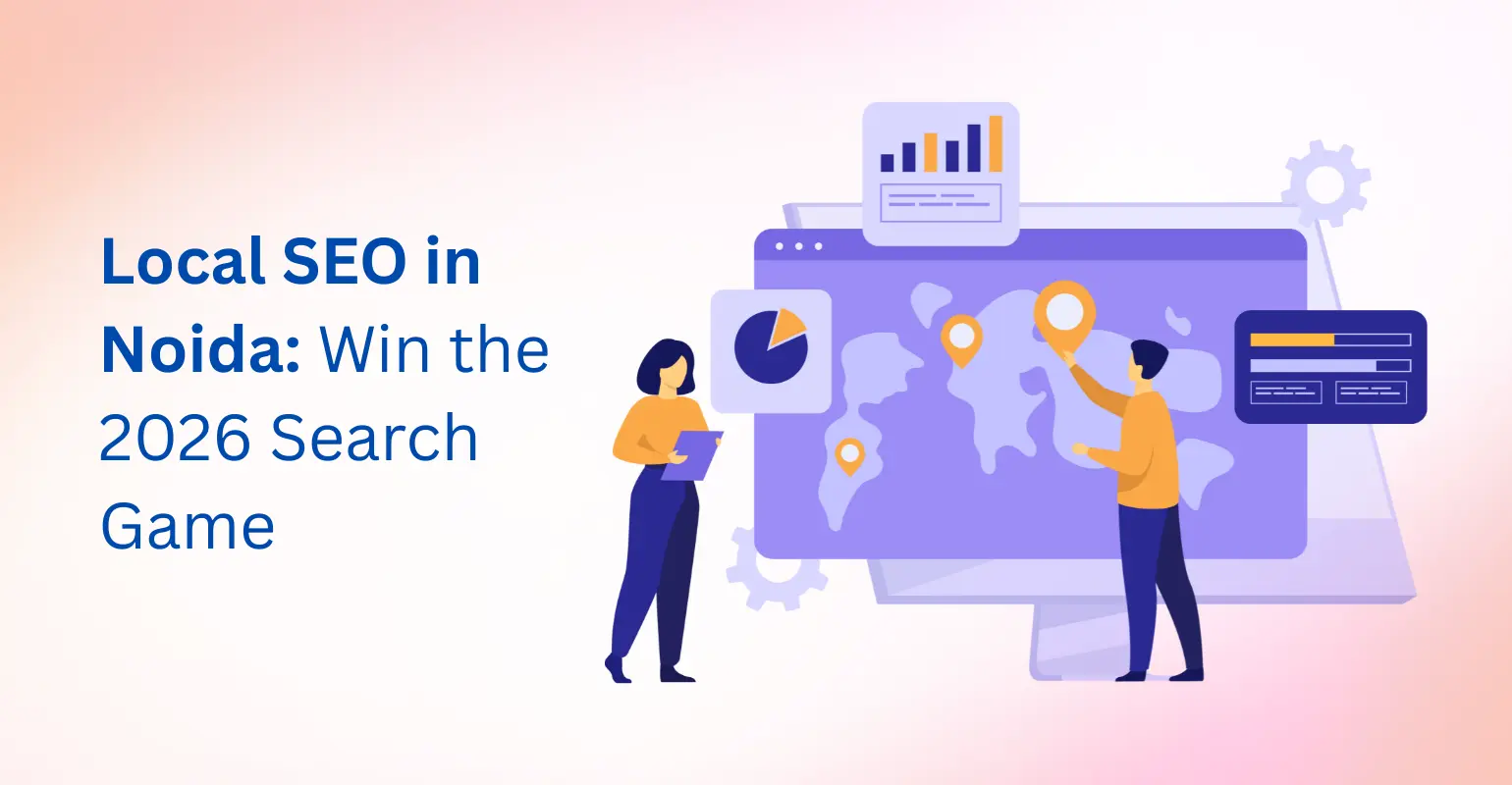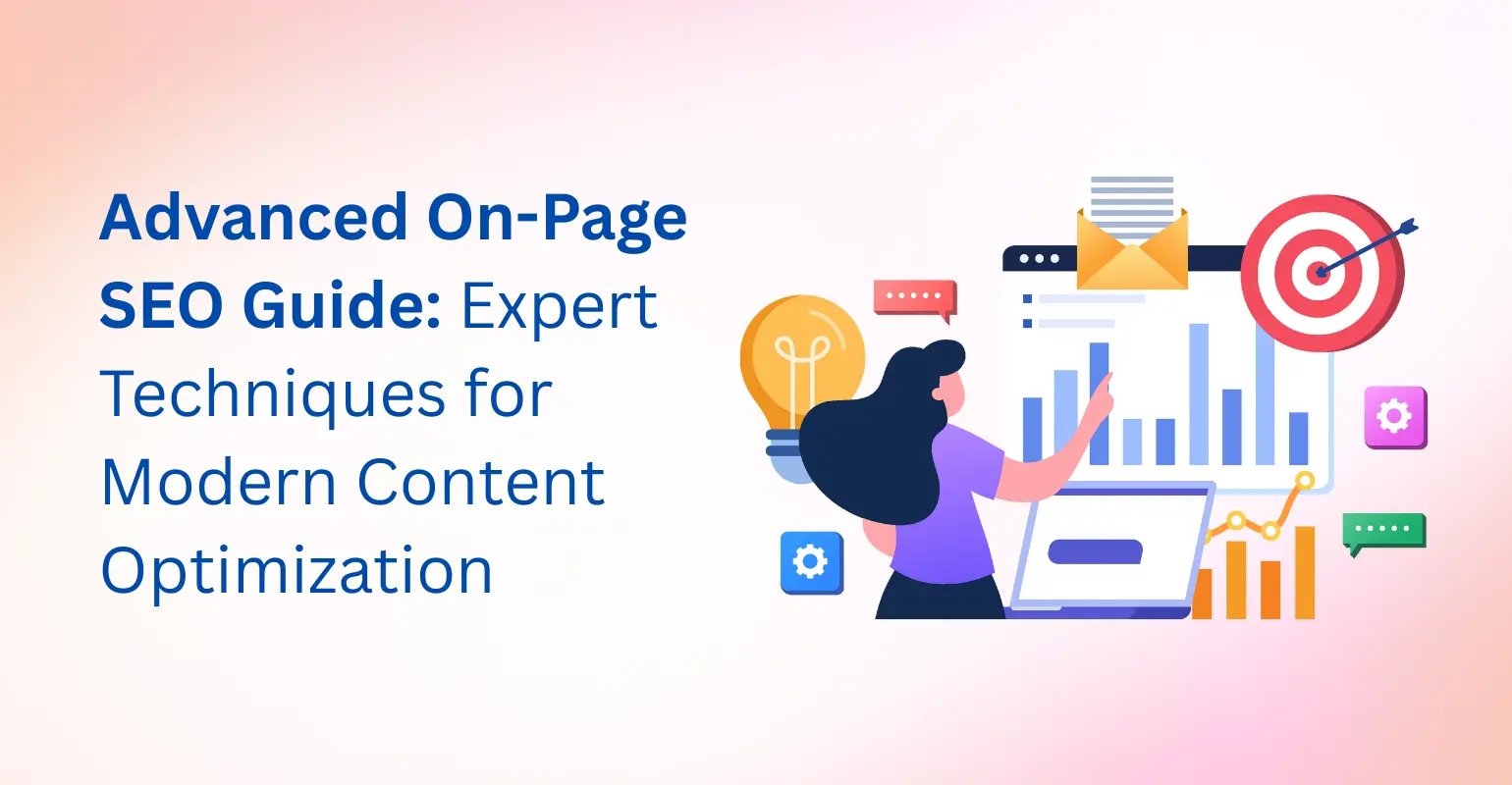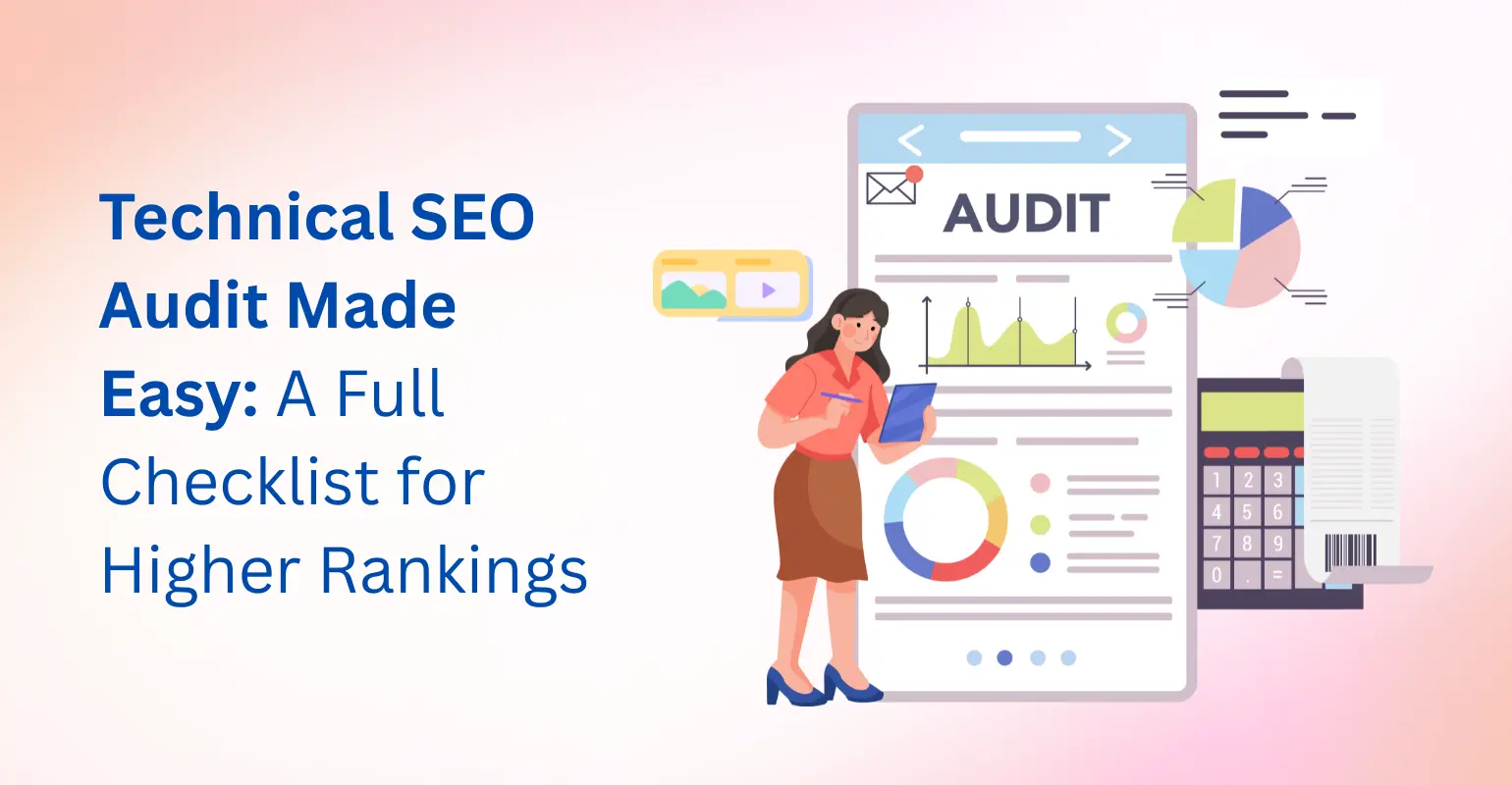blog
10 Local SEO Ranking Factors You Shouldn’t Ignore in 2025
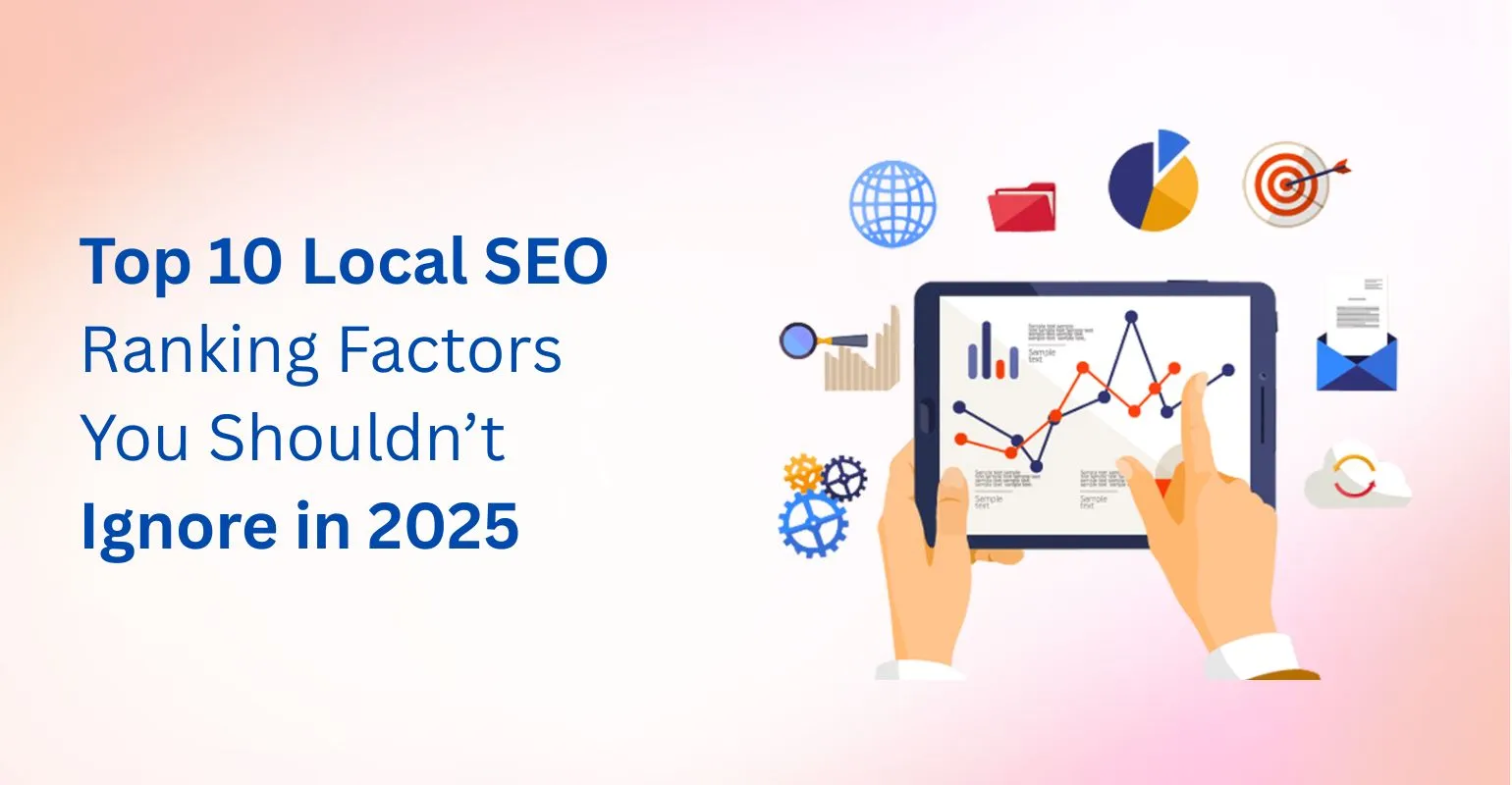
In 2025, local businesses face more competition than ever when it comes to getting found online.
Whether you’re running a medical clinic, a boutique café, or a service-based company, your customers are searching for you using Google and the businesses that show up first often win the sale.
That’s why understanding and optimizing for the most critical local SEO ranking factors is essential.
Local SEO isn’t just about being online it’s about being found by the right people, in the right location, at the right time.
In this blog, we’ll walk you through the top 10 ranking factors you must optimize in 2025 to increase your visibility in Google’s local search results and the coveted local map pack.
Google Business Profile (GBP) Optimization
Your Google Business Profile (formerly Google My Business) is the foundation of local SEO success. Think of it as your primary digital storefront on Google.
A fully optimized, meticulously maintained, and frequently updated GBP can dramatically improve your chances of ranking within the top 3 local results especially for “near me” searches, which are growing exponentially.
Google heavily relies on the information provided in your GBP to understand what your business does, where it’s located, and how it serves local customers.
Key Tips for Maximizing GBP Impact:
- Choose the Most Relevant Business Categories: This is crucial. Google uses your primary category to understand your core offering Utilize secondary categories to further define your services.
- Add Comprehensive Business Hours, Services, and Attributes: Ensure your operational hours are always accurate, including special holiday hours. Detail all services you offer. Leverage Google’s “Attributes” feature to highlight unique.
- Upload High-Quality Photos and Videos Regularly: Upload professional photos of your storefront, interiors, products, services in action, and team members. Regular uploads signal an active, well-maintained profile to Google.
- Utilize GBP Posts for Updates, Offers, and Events: Use Google Posts like mini-blog posts to announce new products, limited-time offers, upcoming events, or general business updates.
- Engage with the Q&A Section: Monitor and answer questions posed by users in your GBP Q&A section.
Pro Tip: Naturally embed relevant keywords within your business description and service offerings to improve relevance, aligning with Google’s guidelines for business information. Focus on providing clear, helpful information that also happens to include your target terms.
NAP Consistency (Name, Address, Phone)
NAP consistency means your business name, address, and phone number must be identical across all online platforms from your website and Google listing to directories like JustDial and IndiaMART.
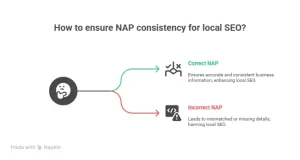
Image Source: Created using Napkin AI
Why It Matters:
Google uses NAP data to verify business legitimacy. Any inconsistency (even a missing “+91” in your phone number) can confuse both search engines and potential customers, hurting your local rankings.
Tools like Moz Local, BrightLocal, and Yext can help track and fix inconsistencies efficiently.
Online Reviews & Ratings
Customer reviews are a major trust signal for both users and search engines. In 2025, Google is placing even more emphasis on the quality, quantity, and frequency of reviews.
Best Practices:
- Encourage happy customers to leave reviews on Google.
- Respond to all reviews, positive or negative to show engagement.
- Use review widgets on your website to boost credibility.
- Diversify Your Review Platforms
Local Citations & Business Directories
Local citations are mentions of your business’s NAP information on other reputable websites, often in online business directories.
These citations act as votes of confidence for your business, validating your existence and authority in the eyes of search engines.
The more high-quality, consistent citations you have, the more credible your business appears to Google.
Key Indian Directories to Prioritize:
- Sulekha
- JustDial
- IndiaMART
- Practo (for healthcare)
- UrbanClap / Urban Company
- Other Niche Directories
- Local Chamber of Commerce Websites
- News Portals & Blogs
Best Practices for Citations:
- Ensure Accuracy and Consistency
- Claim and Verify Listings
- Build High-Quality Citations
Ensure your listings are up-to-date, verified, and aligned with your primary Google Business Profile.
Website Localization
If your business operates in specific cities or service areas, your website should reflect that. This helps Google match your content to relevant local searches.
Key Elements to Include:
- City/area-specific landing pages
- Location keywords in page titles, meta descriptions, and H1 tags
- Embedded Google Maps
- Local customer testimonials
- Local Schema Markup (Structured Data):
- Geo-Targeting in Google Search Console:
Example: Instead of targeting “plumber services,” use “plumber services in Andheri East, Mumbai.”
Mobile Optimization
With a vast majority of local searches initiated on mobile device, your website’s mobile experience is no longer optional it’s paramount.
Google operates on a mobile-first indexing principle, meaning it primarily uses the mobile version of your content for indexing and ranking.
Mobile SEO Checklist:
- Mobile-friendly design
- Fast loading speed (under 3 seconds)
- Tap-to-call buttons
- Legible Fonts and Touch-Friendly Elements
- Simplified Navigation
- Optimized images and compressed CSS/JS
Local Backlinks
Backlinks from other reputable and locally relevant websites act as powerful votes of confidence for your website’s authority.
For local SEO, the quality and local relevance of these links are far more important than the sheer quantity.
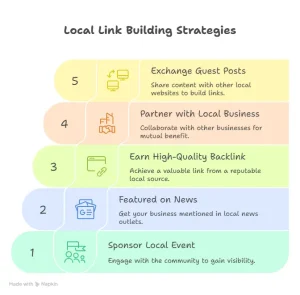
Image Source: Created using Napkin AI
How to Build High-Quality Local Backlinks:
- Sponsor local events or NGOs (and ask for a link back)
- Partner with local blogs, newspapers, and associations
- Create Local Content Worth Linking To
- Get listed in local chamber of commerce websites
- Collaborate with Complementary Local Businesses
Even 5 – 10 solid local links can outperform dozens of generic backlinks when it comes to local rankings.
Behavioral Signals (Engagement Metrics)
Google increasingly monitors how users interact with your business listing and website to determine relevance and quality. These “behavioral signals” indicate how useful and satisfying your online presence is to a searcher.
Key Metrics:
- Clicks on “Call,” “Website,” or “Directions”
- Time spent on site
- Bounce rate and click-through rates (CTR)
How to Optimize for Behavioral Signals:
- Clear Calls to Action (CTAs)
- Structured Navigation
- High-Quality Content
- Real-time Support
- Fast Loading Speed
Proximity, Relevance, and Prominence
Google’s local algorithm prioritizes businesses based on:
- Proximity (how close the searcher is)
- Relevance (how well your content matches the search query)
- Prominence (how well-known your business is online)
What You Can Control:
- Improve prominence by gaining reviews and backlinks
- Improve relevance with keyword-optimized content and complete profiles
- Proximity depends on the searcher’s location focus on geo-targeted content
AEO (Answer Engine Optimization) for Local SEO: Beyond Traditional Search
In 2025, search is evolving beyond just web pages. Voice search, AI-powered assistants like Google Assistant and ChatGPT, and “zero-click” search results (where the answer is provided directly on the search results page) are increasingly common.
Answer Engine Optimization (AEO) for local SEO means optimizing your content to be the direct, concise answer to user questions, often delivered verbally or in a featured snippet.
How to Apply AEO in Local SEO:
- Use structured data (FAQ schema, LocalBusiness schema)
- Add concise Q&A formats on location pages
- Optimize for conversational, question-based queries like ‘best café near me open now’ or ‘top local SEO agency in Noida or Delhi’ to target voice search and zero-click results more effectively.
- Create “How-To” Content
In 2025, mastering AEO is essential to win the “zero-click” searches, especially on mobile and voice devices, which are becoming the first point of interaction for many local consumers.
Let’s Get You Found – Locally and Consistently
In today’s competitive search landscape, mastering these local SEO ranking factors isn’t optional it’s critical to growing your visibility, leads, and revenue. From optimizing your Google Business Profile to ensuring your website loads fast on mobile, each of these elements adds up to better rankings and more customers.
Need help climbing local rankings in 2025? Contact our Local SEO experts today for a free consultation or audit.
FAQs – Local SEO Ranking Factors in 2025
Q1. What is the most important local SEO ranking factor today?
A: Google Business Profile optimization is the most critical, followed by reviews and NAP consistency.
Q2. How often should I update my Google Business Profile?
A: Review and update your profile at least once a month, especially if hours, services, or photos change.
Q3. Does my business need a physical location for local SEO?
A: Not necessarily. Service-area businesses can still rank locally if they define service regions in GBP.
Q4. How can I rank in the Google local map pack?
A: Focus on GBP optimization, reviews, proximity, and gaining local backlinks and citations.
Q5. Are there free tools to audit my local SEO?
A: Yes, try Semrush, BrightLocal’s free tools, Google Search Console, and Google’s mobile-friendly test.


